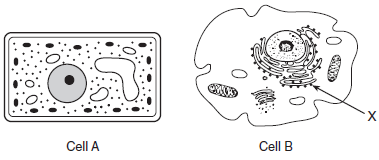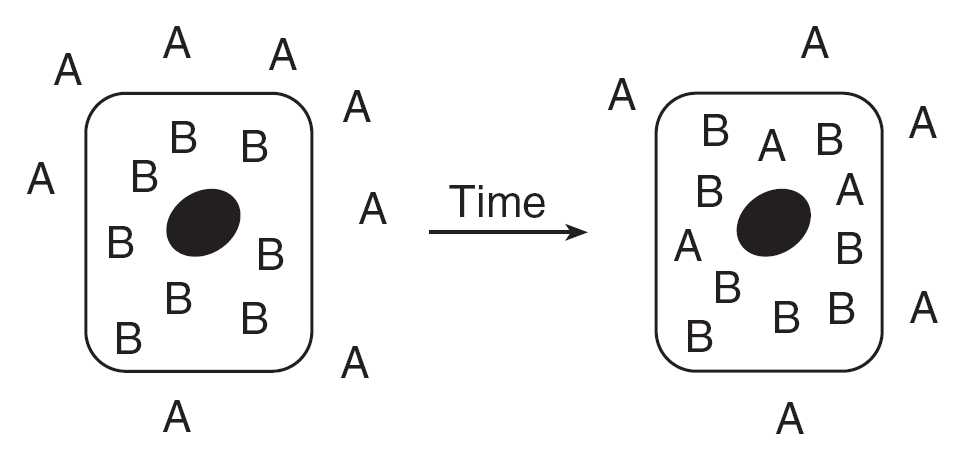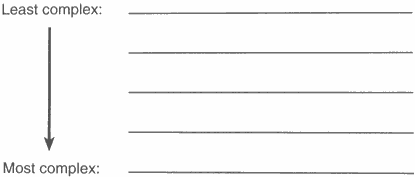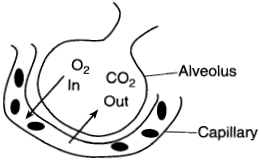Which statement is part of the cell theory?
a) cells are microscopic
b) cells have definitive boundaries
c) cells require oxygen for metabolism
d) cells come from preexisting cells
d) cells come from preexisting cells
They breakdown food mechanically.
Teeth
Stomach
This organ pumps blood so that it travels everywhere in the human body.
Heart
After a cookie has been digested, glucose molecules enter the bloodstream by the process of:
a) phagocytosis
b) diffusion
c) ingestion
d) pinocytosis
b) diffusion
This protein is known as a catalyst.
Enzyme
Rabbits have evolved strategies that get them through periods of time when there is
little food. The diagram below represents essential life functions that rabbits need to perform.
Which life function in the diagram could be eliminated without affecting an individual rabbit's ability to survive when food is scarce?
a) growth
b) excretion
c) reproduction
d) respiration
c) reproduction
The transfer of energy from nutrients to ATP is accomplished most directly by the process of:
a) cyclosis
b) diffusion
c) cellular respiration
d) glucose synthesis
c) cellular respiration
Process that allows oxygen to leave the capillart and carbon dioxide to enter the capillary
Diffusion
The main function of the human digestive system is to:
a) rid the body of cellular waste materials
b) process organic molecules so they can enter cells
c) break down glucose in order to release energy
d) change amino acids into proteins and carbohydrates
b) process organic molecules so they can enter cells
Which characteristic allows enzymes to function in a specific way?
a) Enzymes are complex compounds composed of starch.
b) Each enzyme has a characteristic shape.
c) Enzymes are long, complex fats.
d) Each enzyme is made up of four subunits.
b) Each enzyme has a characteristic shape.
Base your answer to the question on the information below and on your knowledge of biology. The diagrams represent two different cells and some of their parts. The diagrams are not drawn to scale.

Question: Identify an organelle in cell A that is the site of autotrophic nutrition.
Chloroplast
By which process are CO2 and H2O converted to carbohydrates?
a) transpiration
b) respiration
c) fermentation
d) photosynthesis
d) photosynthesis
The process in which the net movement of molecules is from a region of lower concentration to a region of-higher concentration is known as:
a) active transport
b) diffusion
c) osmosis
d) passive transport
a) active transport
Into which parts of the human digestive system are digestive enzymes secreted?
a) mouth, esophagus, stomach
b) stomach, small intestine, large intestine
c) mouth, stomach, small intestine
d) esophagus, stomach, large intestine
c) mouth, stomach, small intestine
All cells of an organism are engaged in many different chemical reactions. This fact is best supported by the presence in each cell of thousands of different kinds of:
a) enzymes
b) nuclei
c) chloroplasts
d) organelles
a) enzymes
Which statement is not part of the cell theory?
a) Cells are the structural units in living things.
b) Cells are the functional units in living things.
c) New cells arise from preexisting cells.
d) New cells have nuclei identical to those of preexisting cells
d) New cells have nuclei identical to those of preexisting cells
The diagram below represents an activity that occurs in the human body.
This diagram best illustrates (represents)
(A) active transport
(B) maintenance of homeostasis
differentiation
(C) synthesis of nutrients
(D) differentiation
(B) maintenance of homeostasis
differentiation
Two molecules, A and B, and their distribution inside and outside of a cell are represented in the diagram below.

which statement below is true based on the diagram shown?
A) Molecule A is a large molecule and does not diffuse
B) Molecule A is starch
C) Molecule B is small and diffuses
D) Molecule B is large and does not diffuse
D) Molecule B is large and does not diffuse
The release of solid waste from the digestive system
A) egestion
B) ingestion
C) excretion
A) egestion
Base your answer on the diagram below which represents steps in the enzyme-catalyzed breakdown of maltose and on your knowledge of biology.

Question:
Steps 1 through 5 best illustrate:
a) that substrate concentration affects enzyme action
b) a model of enzyme specificity
c) that enzymes are composed of protein
d) the role of coenzymes in chemical reactions
b) a model of enzyme specificity
Write the structures listed below in order from least complex to most complex.
organ
cell
organism
organelle
tissue

organelle
cell
tissue
organ
organism
After food enters the small intestine, lipase, proteases, amylases are secreted into the small intestine by the
A) liver
B) salivary glands
C) pancreas
pancreas
The diagram below represents one of many microscopic air sacs in a human lung. The alveolus (air sac) is the place where oxygen (O2) and carbon dioxide (CO2) move into or out of the blood, as represented in the diagram.

Which statement best explains why these gases are able to move in the directions shown in the diagram?
A) The CO2 moves out of the capillary and into the alveolus to make more room for the blood to carry O2.
B) The O2 is needed by the cells, so it is actively transported into the blood. The CO2, which is not needed, is actively transported out of the blood.
C) The blood coming to the lungs is low in CO2 and high in O2, so the gases each diffuse from a lower to a higher concentration in this area.
A) The blood coming to the lungs is high in CO2 and low in O2, so the gases each diffuse from a higher to a lower concentration in this area.
D) The blood coming to the lungs is high in CO2 and low in O2, so the gases each diffuse from a higher to a lower concentration in this area.
Before starch can enter a cell, it must be
A) absorbed by simple sugars
B) diffused into simple sugars
C) broken down into simple sugars
D) actively transported by simple sugars
C) broken down into simple sugars
Two factors that can affect the shape of an enzyme and its function.
pH and Temperature
or concentration of the enzyme and concentration of the substrate.